Transylvania – interesting facts to know, myths, and legends: This is the realm where all converge to create an enigmatic tapestry of wonders! But, when you say Transylvania, it sounds so surreal that you might wonder if this place exists or is simply a fairytale. And it is indeed a real place with weird and interesting facts to learn about!
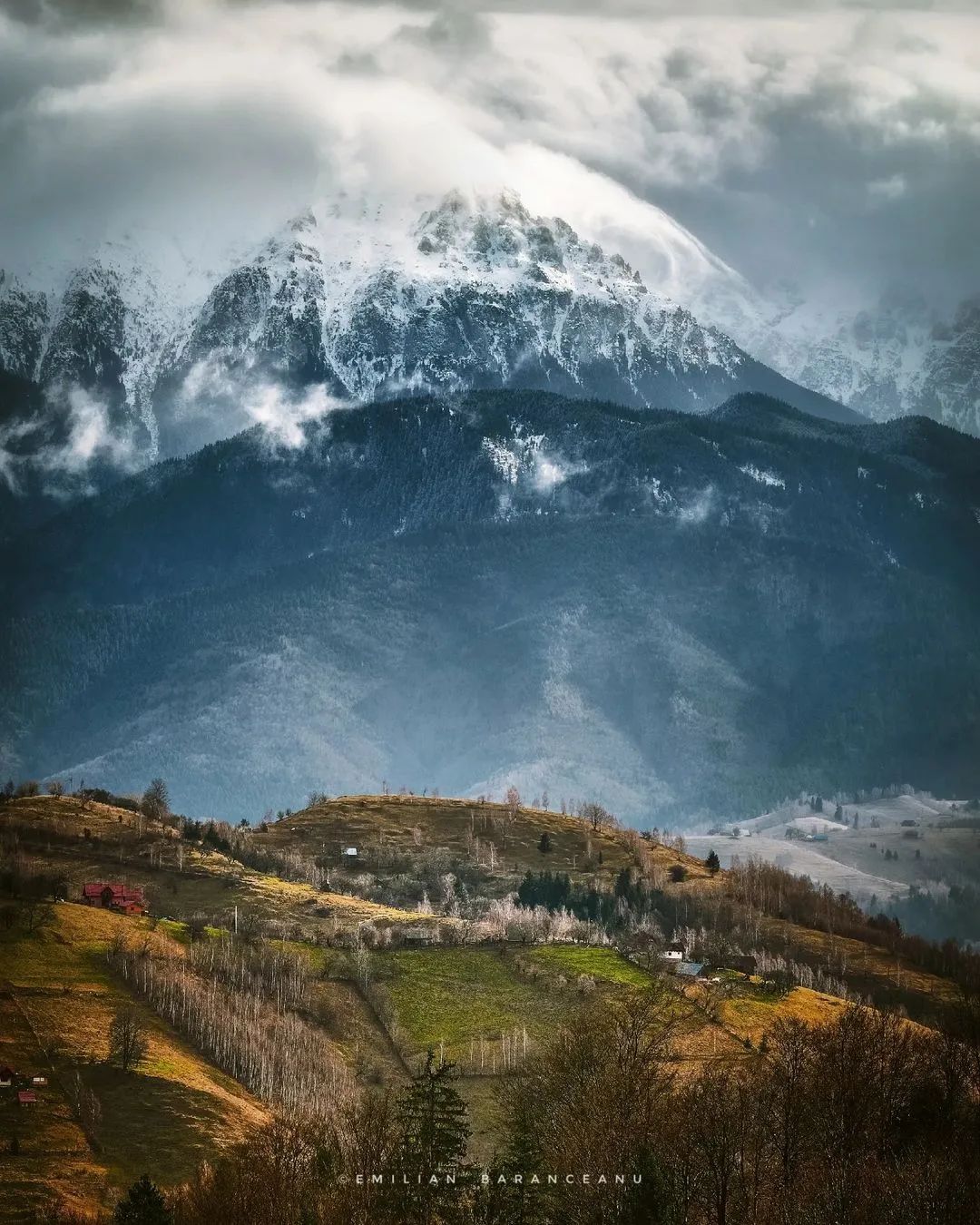
Magical Transylvania and the Carpathian Mountains – Brașov, Romania 📷 © Photo by @emilian.baranceanu
In the heart of Romania, the land of Transylvania beckons adventurous souls with captivating supernatural tales of vampires, werewolves, and of course, Count Dracula. But looking beyond the value of fiction, this land is history, cultural richness, and most of all awe-inspiring landscapes that have enchanted travelers for centuries.
Join Framey’s adventure as we embark on a journey to explore the weird and fascinating myths and legends of Transylvania, unearthing the truths that lie within by answering the questions you always wanted an answer for.
What is Transylvania best known for? Transylvania – Interesting Facts To Know
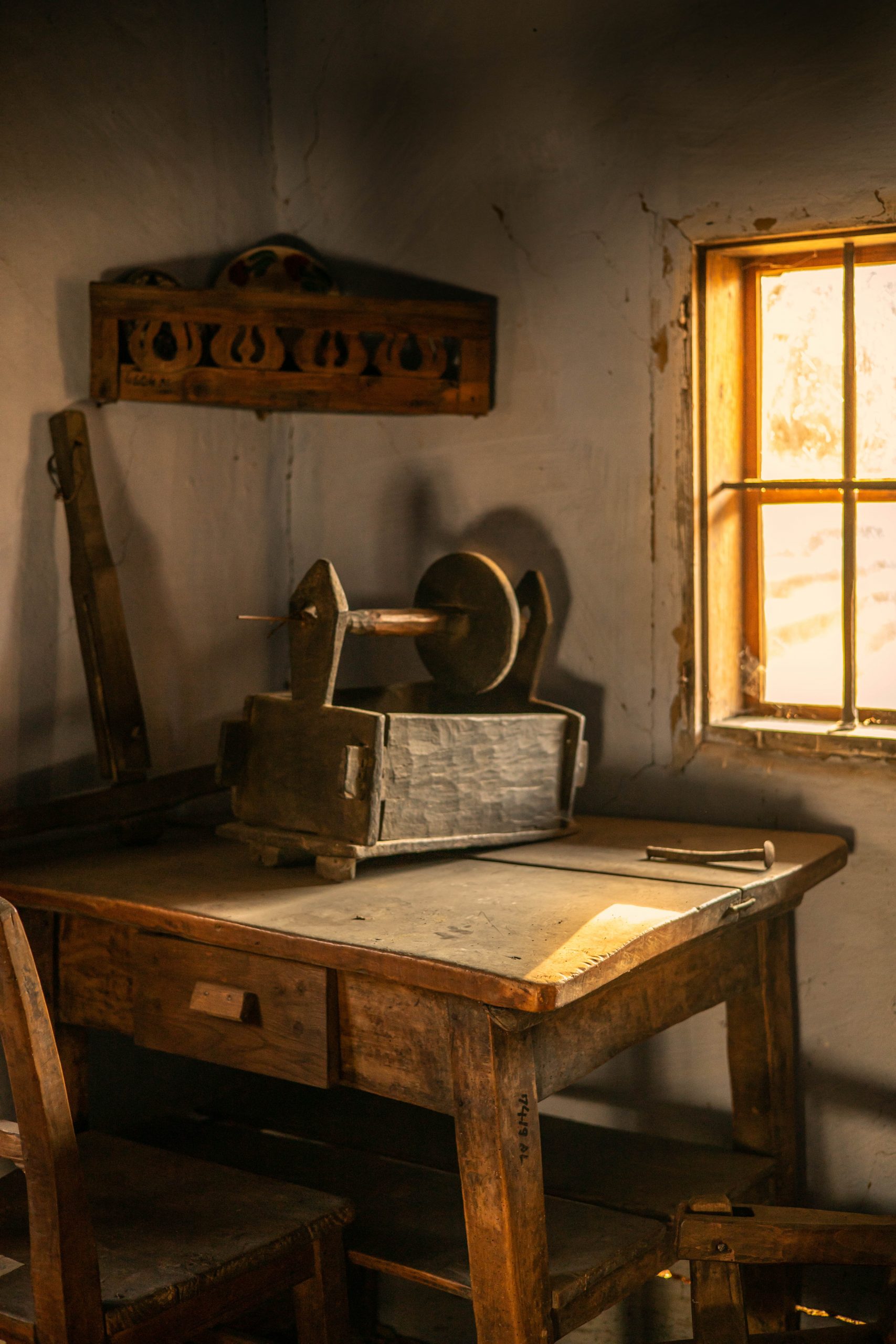
Transylvanian Old Romanian Peasant Room
Transylvania’s fame stretches far beyond the realm of Dracula’s myth. This captivating region is renowned for its well-preserved medieval towns, picturesque landscapes, and vibrant cultural traditions that have been lingering for centuries.

Fairy tale winter landscape of a bison family in winter, at Vama Buzaului, Brasov, Transylvania 📷 © Photo by @antal.zsombi
Some of Transylvania’s best features can be admired in Sibiu, sipping a cup of coffee, and looking through the weird eyes of Sibiu’s Old Town, where centuries-old stories whisper from every corner. Medieval citadels like the Sighisoara or the Fortified church in Viscri coupled with the serpent way the Transfagarasan Road cuts into the Carpathian Mountains are only a few of the countless sights that inspire legends. And let’s not forget Brasov’s attractions, starting with its famous and most impressive, Black Church reigning the center.
I do not want to spoil all the surprises but Transylvania will prove to be a trove of fascinating tales and history that stretch back to ancient times. You just need to look them up.
Why is Transylvania called Transylvania and not Transilvania?
The intriguing name of “Transylvania” has its roots in history and linguistic evolution. The term comes from the Latin phrase “Ultra Silvam,” which means “beyond the forest.” Later, the Medieval Latin form Ultrasylvania, later Transylvania, was a direct translation from the Hungarian form Erdő-elve, later Erdély, from which also the Romanian name, Ardeal, comes.
Both Transylvania and Ardeal refer to the region lying beyond the dense forests of the Carpathian Mountains. Over time, the name gradually evolved, and the current form, “Transylvania,” became common.
The shift from “Transylvania” to “Transilvania” can be attributed to linguistic variations and the influence of different cultures and languages that have shaped the region’s history, Romanian rarely has the letter “Y” in common usage.
Why is Transylvania known for vampires & Why is Transylvania related to vampires?
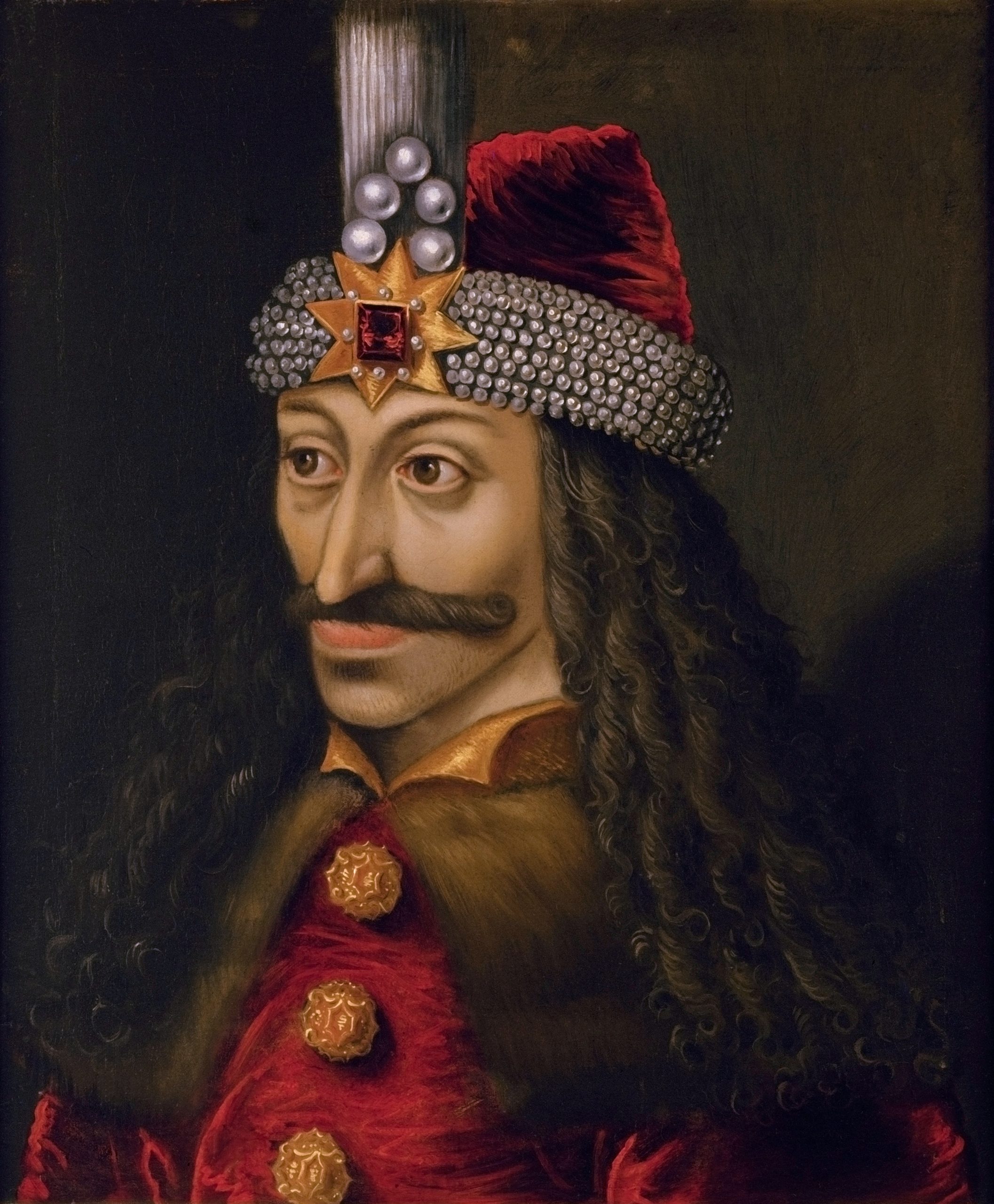
Vlad the Impaler, former Voivode of Wallachia, commonly known as Vlad the Impaler or Vlad Dracula – Source: Wikipedia
The short answer is that Transylvania’s association with vampires is largely attributed to the infamous legend of Bram Stoker’s Count Dracula. But, the character of Dracula was inspired by a real ruler, Vlad Tepes, known as Vlad the Impaler, known for his ruthless tactics, including impaling his enemies, which led to his fearsome reputation.
The connection between Vlad and Transylvania is due to the fact that he spent time in captivity within the region. Although Bram Stoker’s novel is a work of fiction, the atmospheric landscapes and Gothic castles of Transylvania are the ideal settings for the mythical vampire tale. Over time, Transylvania became closely linked to the Dracula myth, solidifying its status as the land of vampires.
But, you might also want to keep in mind that, for the locals, Vlad is not so much a fictional supernatural character. But he is in fact a national hero that fought the Ottoman Empire and is regarded as such.
You might even be surprised that there are not as many vampire and werewolf native stories as you might imagine! But this, by no means, means that there is no enigma here. Beauty is mixed with mystique, and fairytale lands and legends, making Transylvania’s allure remains steadfast, a timeless realm where history and fantasy intertwine.
Can you go into Dracula’s Castle? Transylvania – Interesting Facts To Know
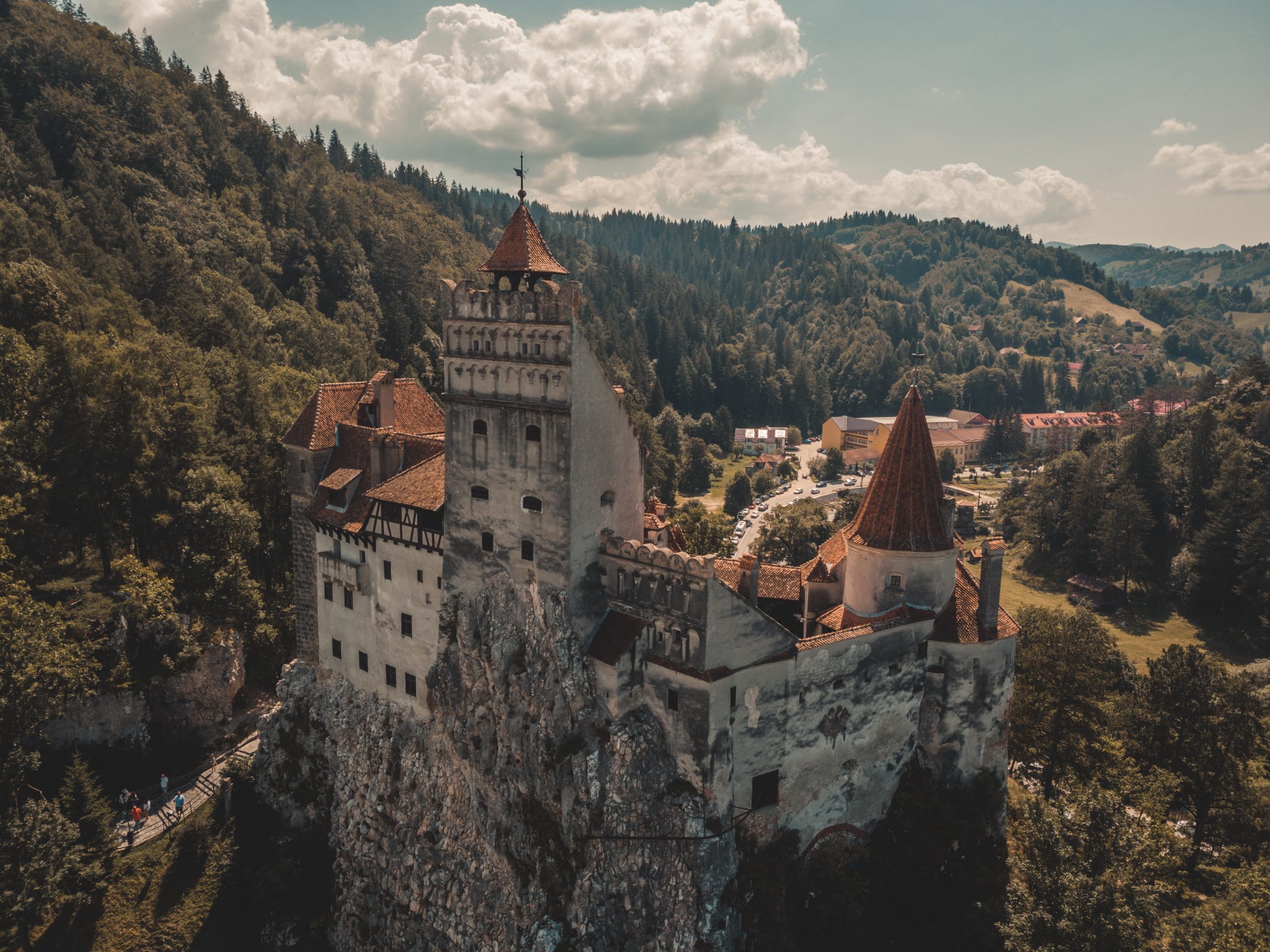
Amazing shot of Bran Castle
Absolutely! Bran Castle, perched majestically atop a hill in Transylvania, is often referred to as “Dracula’s Castle” due to its association with the vampire tale.
This iconic fortress offers visitors a glimpse into history, as well as a taste of the mythical world of vampires. While Count Dracula’s connection to the castle is more fictional than factual, the eerie ambiance and Gothic architecture add to the mystique. Stepping inside the winding halls gives you the reason why Transylvania’s enduring mythos has fascinated generations.
And if it is castles that you are into, my advice is to do your best to check the others as well. Corvin’s Castle, for example, is simply a walk back into the ages of knights and princesses.
How many days do you need in Transylvania?
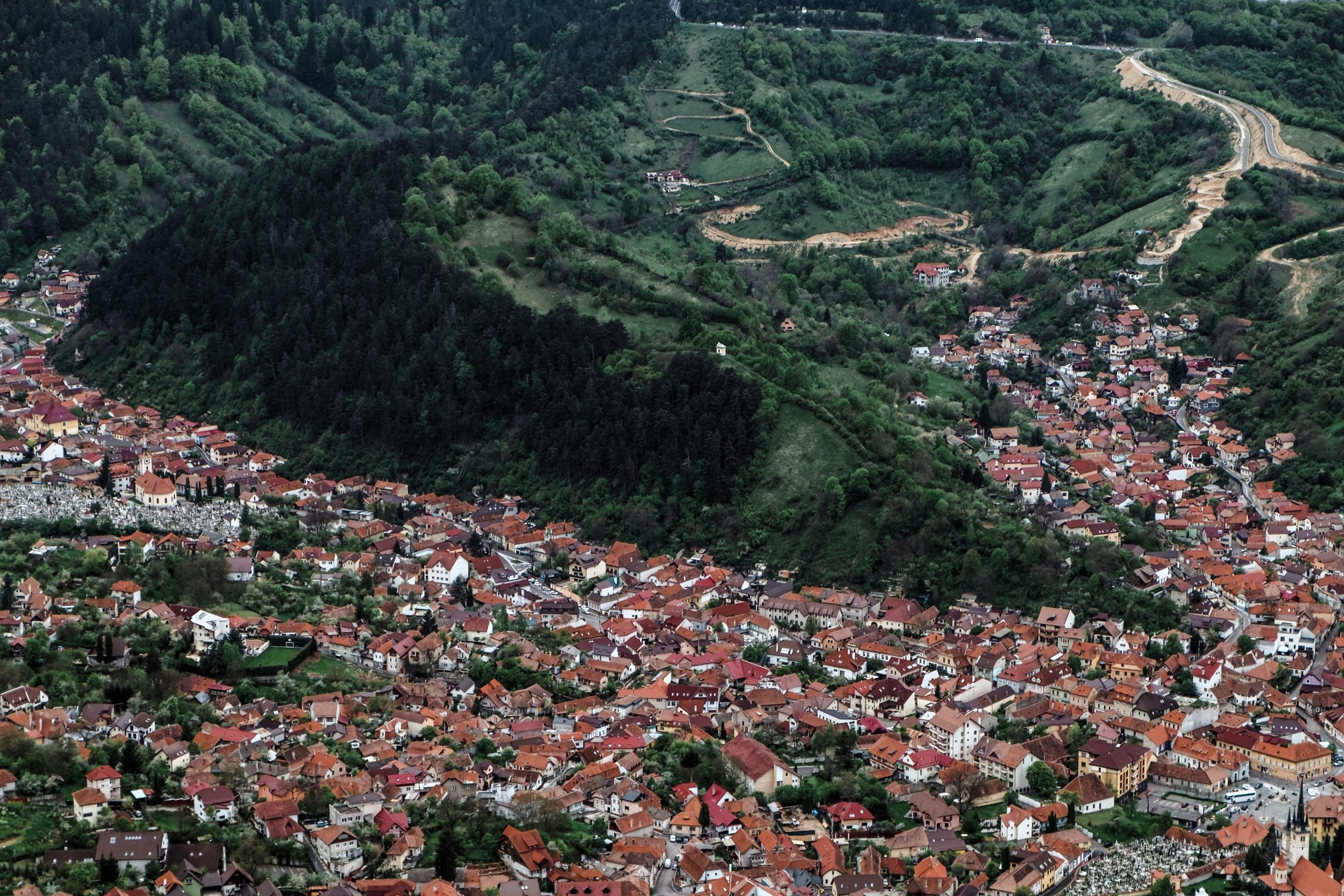
Beautiful aerial wide shot of Tampa Mountain and Old City Brasov

The imposing gothic Black Church of Brasov
When delving into the depths of Transylvania’s myths and legends, allocating sufficient time is essential to fully uncover all its charms.
Plan to spend at least 5 to 7 days in this captivating region to experience the most iconic locations. Explore the charming towns of Sibiu and Brasov, where folklore comes to life in cobblestone streets and medieval architecture. A longer stay of two weeks allows you to venture off the beaten path, discovering lesser-known gems and absorbing the rich cultural heritage of Transylvania.
What is the best time of year to visit Transylvania? Transylvania – Interesting Facts To Know
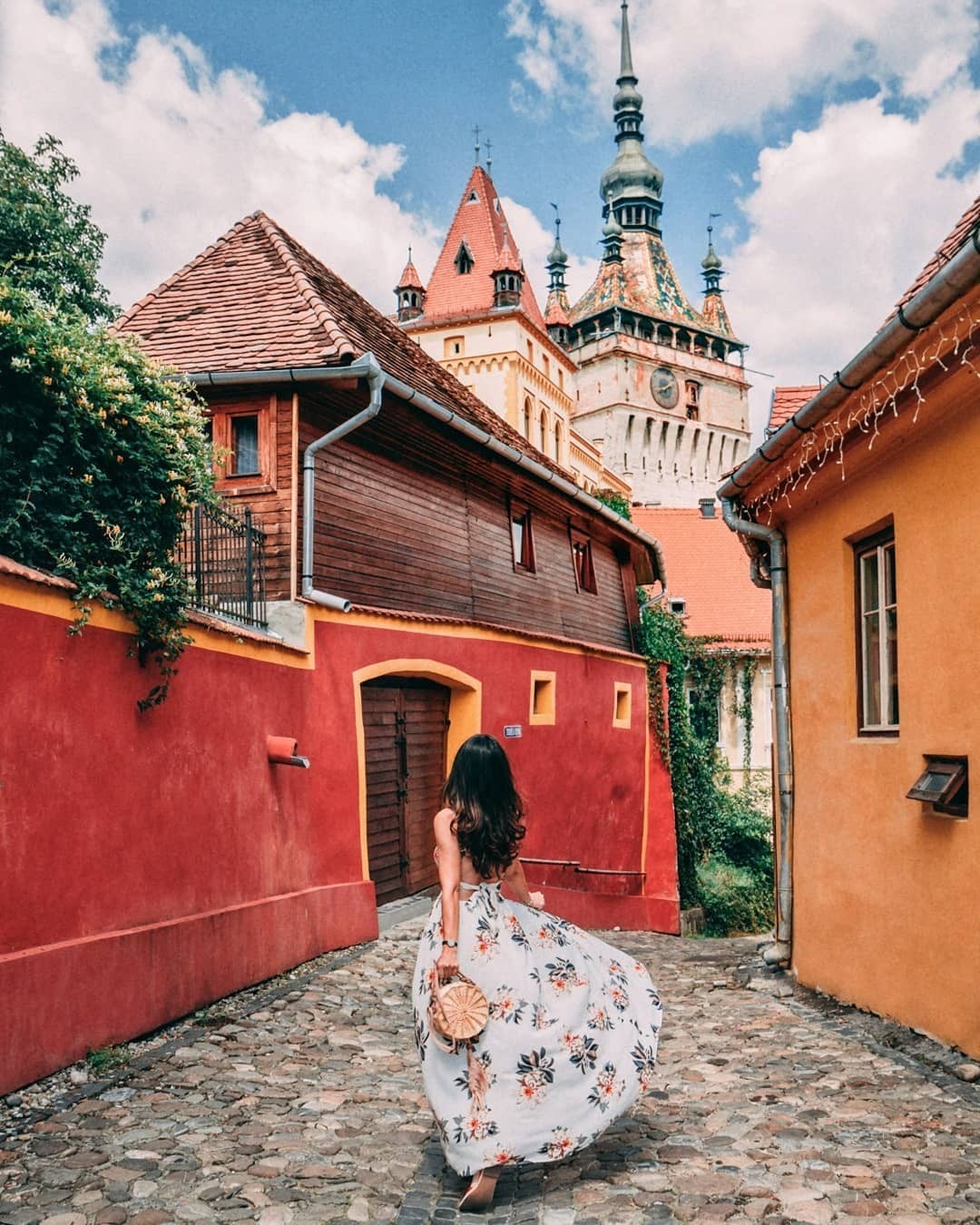
Girl with a white dress and summer flowers at the entrance to the colorful and charming citadel of Sighisoara 📷 © Photo by Georgiana
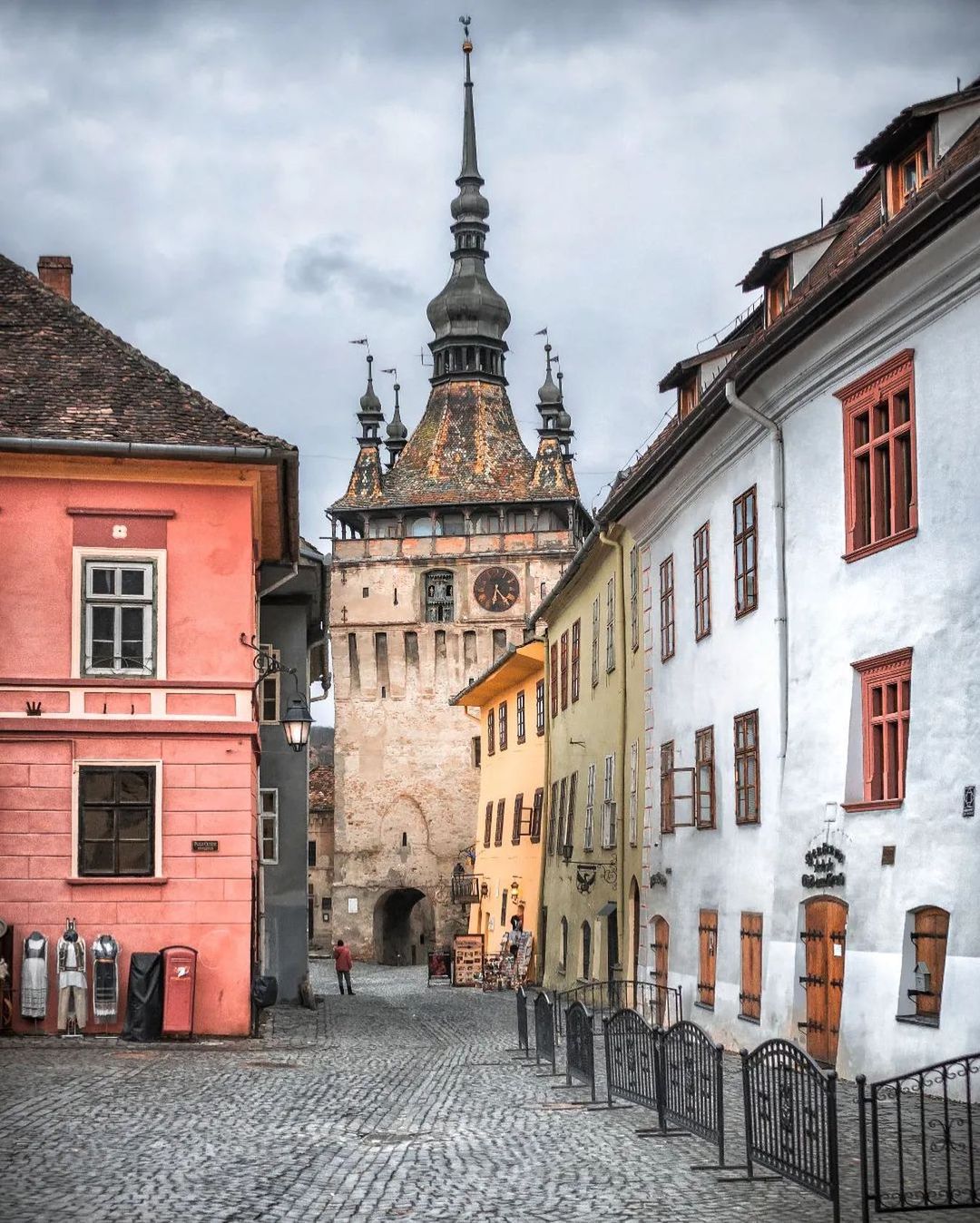
The famous and charming city of Sighisoara on a cloudy day 📷 © Photo by @radu.holerga
Each season in Transylvania holds its own allure and charm.
Spring, with its blooming landscapes and mild weather, offers a refreshing experience away from the summer crowds. Embrace the vibrant festivities during the summer months, as Transylvania comes alive with cultural events and celebrations. The autumn foliage paints the landscape in a riot of colors, making it an ideal time for nature enthusiasts and photographers. Winter transforms Transylvania into a fairytale wonderland, where snow-capped castles and villages seem plucked from storybooks.
Choose a time that resonates with your spirit and Transylvania will undoubtedly leave an indelible mark on your heart.
Do they speak English in Transylvania?

A large ceramics and pottery festival at Sibiu, Transylvania 📷 © Photo by @farcanea.george
English is widely spoken in Transylvania, especially in urban areas and tourist hubs. The locals, known for their warm hospitality, often welcome visitors with open arms and are eager to converse in English.
While Romanian is the official language, you’ll find that many signs, menus, and attractions are bilingual, making it convenient for English-speaking travelers to navigate the region. But if you are traveling to the more remote locations of the Apuseni Mountains do keep in mind that the likeliness of encountering other English natives is lower. But since the landscape has such a vibe don’t let English proficiency keep you from an unforgettable journey.
Is it safe to travel to Transylvania? Transylvania – Interesting Facts To Know

Incredible view over Balea Lake, the highest point of the epic Transfagarasan Road in Transylvania 📷 © Photo by @anna_discovers_romania
Safety is a top concern for any traveler, and you’ll be pleased to know that Transylvania is generally considered safe for visitors. Romania, including Transylvania, has made significant strides in terms of safety and security, making it a welcoming destination for tourists. As with any place, exercise standard precautions, be aware of your surroundings, and keep your belongings secure. Embrace the warm hospitality of the locals and explore the region with confidence, knowing that Transylvania’s allure is matched by its commitment to ensuring a safe and memorable experience for all.
Is Transylvania in Romania or Hungary?

Fundătura Ponoroului, Hunedoara, Transylvania, Romania 📷 © Photo by @tudor_lozba
Transylvania is a historical region located in central Romania. While it is true that Transylvania has a diverse cultural heritage, with influences from Romanian, Hungarian, and German traditions, the majority of the region’s population is Romanian. Throughout history, Transylvania has been a melting pot of various cultures, resulting in a unique blend of traditions that have left an indelible mark on its identity.
After World War I, Transylvania was formally united with Romania, becoming an integral part of the country. This historical event is known as the Union of Transylvania with Romania, which took place on December 1, 1918. Since then, Transylvania has remained an essential and cherished part of Romania, celebrated for its rich history, stunning landscapes, and captivating myths and legends.
Are Romanians friendly? Transylvania – Interesting Facts To Know
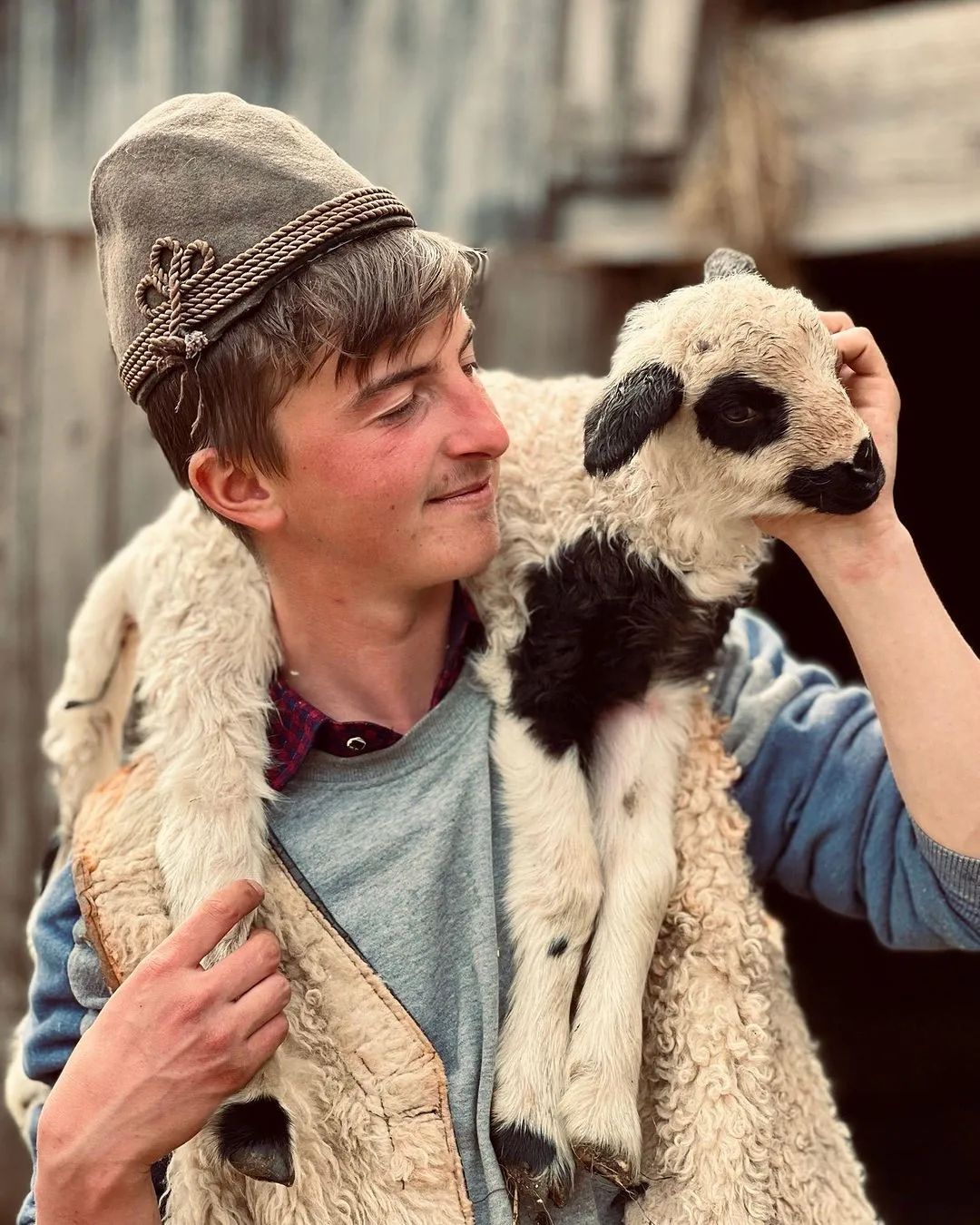
Young shepherd carrying a sheep on his shoulders in Deleni, Ideciu De Jos, Mureș, Transylvania 📷 © Photo by @cuiosifpecoclauri
Romanians are renowned for their genuine warmth and friendliness towards visitors. When you venture into the heart of Transylvania, expect to be embraced by the locals’ welcoming demeanor and hospitality.
Whether you’re navigating the bustling markets, seeking directions, or delving into Transylvania’s myths and legends, you’ll find that Romanians are always eager to share their culture and traditions with a smile. Embrace the camaraderie, savor the conversations, and forge connections that will leave a lasting impression on your travels.
Is Hotel Transylvania based in Romania?
The animated movie “Hotel Transylvania” and its sequels, which humorously depict a hotel run by monsters, are not directly based on Romania or Transylvania.
However, the films draw inspiration from the legendary figure of Count Dracula and his connection to the region. The fictional setting of “Transylvania” in the movie allows for creative storytelling, incorporating elements of vampire lore and captivating audiences with its whimsical charm. While Hotel Transylvania isn’t a documentary on the region, its popularity has piqued curiosity, leading travelers to explore the fascinating truths and myths of the real Transylvania.
Is Romania a rich or poor country? Transylvania – Interesting Facts To Know
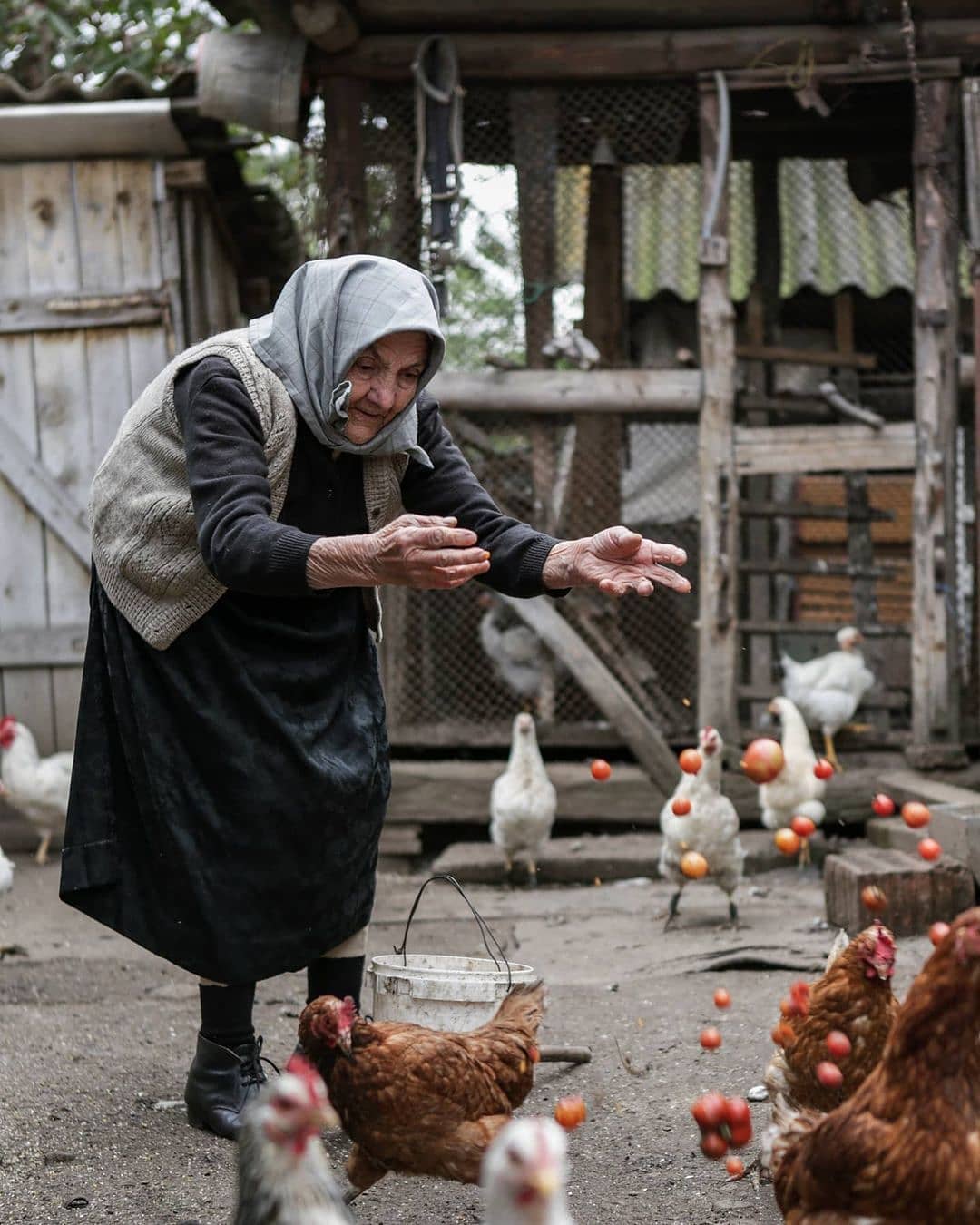
A woman from Transylvania feeding the chickens in her own household in Oarda De Jos, Alba, Romania
Romania is a country of contrasts, blending both modernity and tradition. While some areas boast prosperity and economic growth, others still face challenges. Transylvania, in particular, showcases the country’s diverse landscape and cultural heritage, reflecting both its historical wealth and resilience. And as you explore the region’s vibrant towns, its untouched rural side, and witness its scenic splendor, you’ll gain a deeper appreciation for Romania’s complexity and the enduring spirit that shapes its identity.
Final Thought: Just Embrace Transylvania’s Myths and Legends
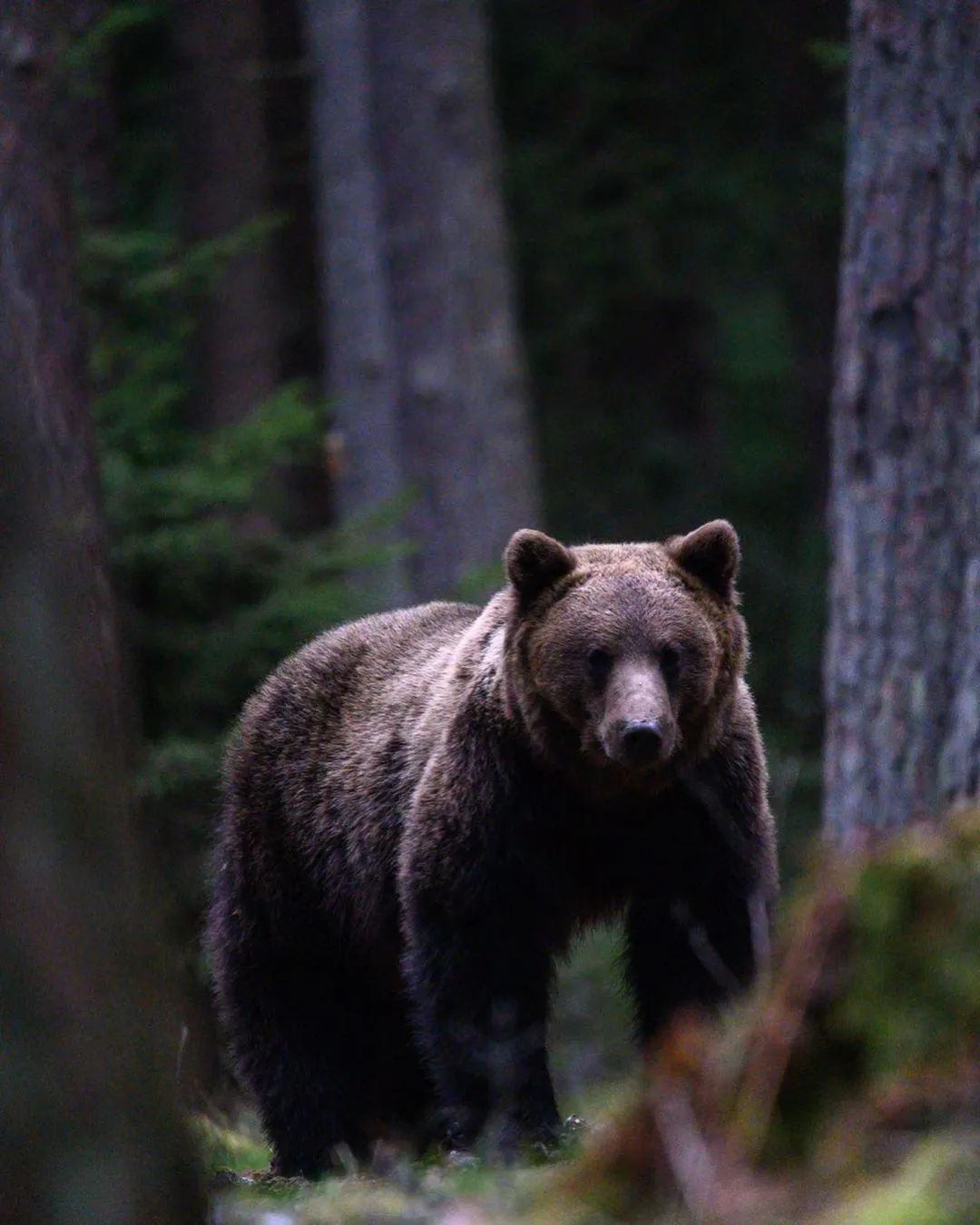
Big bear spotted in Harghita County, Transylvania, Romania 📷 © Photo by @antal.zsombi
As our journey through the mythical realm of Transylvania comes to a close, the allure of its enigmatic tales and captivating landscapes lingers on. From the storied halls of Bran Castle to the idyllic charm of its medieval towns, Transylvania continues to inspire wonder and fascination in those who dare to venture here.
Unraveling the secrets within Transylvania’s myths and legends, you’ll find a treasure trove of cultural richness, breathtaking beauty, and an enduring allure that will stay with you long after your journey ends. And all the myths and legends would have already woven themselves into the fabric of this extraordinary region and cast its timeless spell on your soul.
For even more such enchanting destinations, go ahead and download Framey, your passport to everlasting memories and stories that can surpass your wildest dreams!


